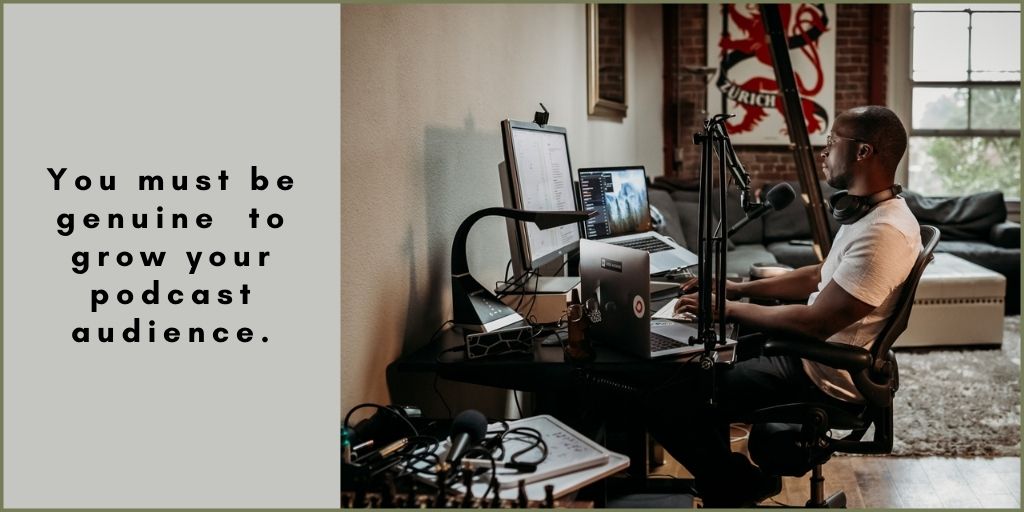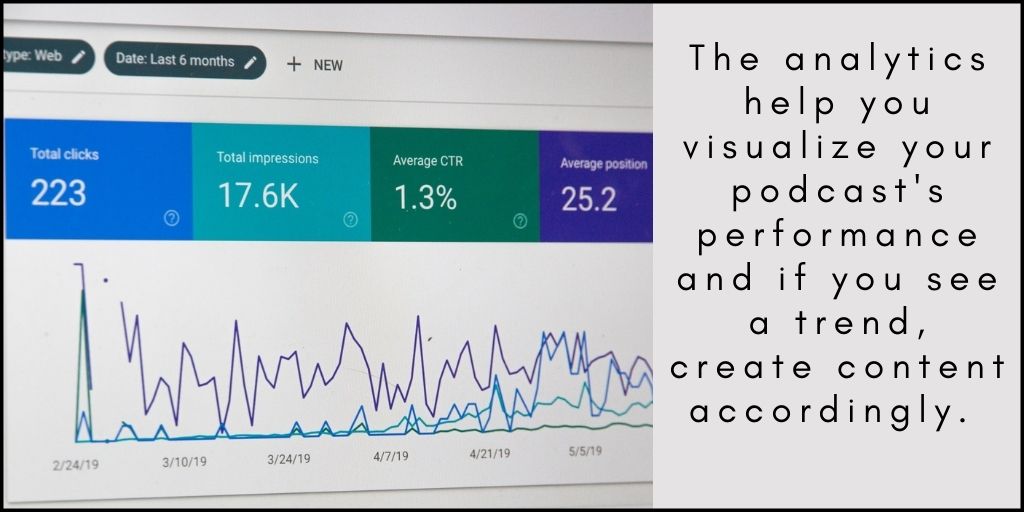Recently, headlines of Joe Rogan landing a $100 million deal with Spotify may have made your eyes widen.
That’s $1 for every American who listens to podcasts during 2020. It also may have made you think about how to grow your podcast audience to achieve your personal goals.
It might seem daunting if you haven’t started a podcast yet, and you’re trying to figure out what you need to start. Surprisingly, you don’t need many things; you can start with your iPhone, iPad, or Android device, as long as their microphones are up to snuff.
Once you have your recording figured out, and maybe even the content idea, how do you get people to listen? It’s probably the number one question podcasters ever ask.
Keep reading to get some of the best tips we can offer.
Sincere Connections With Listeners
Podcasting is just like being a business owner, in a way. Your product is you, your opinion, your viewpoint, or those you interview in your podcast. It’s your voice, essentially.
Who does your voice resonate with? Do you know? It would be good to know before you even pick your niche.
Once you have, though, you have to realize that your voice resonates with those people because you’re being you. You must be genuine and sincere in everything you do to grow your podcast audience.
If you don’t succeed with your podcast, see where you’re not genuine, and you’ll probably solve the problem of growth.
Connect with your audience with this genuine voice off-mic as well, using social media tools that your audience is using.

Research Your Target Audience
This is where researching your audience demographic comes into play. It might be surprising to you who that might be. At least 48% of Americans aged 12-34 are the largest segment of listeners by far. Get to know what they like, along with the other current demographic traits.
Get comfortable speaking to a group of people as a fictitious character (avatar) that you’ve invented with those traits.
Welcome Newcomers to the Community
Wherever you engage with your community off-mic, welcome newcomers to the community if you can. Of course, you might get so many followers it’s impossible to welcome them all. But if some are engaging enthusiastically and you don’t recognize the name, welcome and thank them for their voice.
Cultivating your community means sprinkling the waters of attention, and meaning it.
Engage as Yourself
All of these points mention getting emotionally involved with your audience and giving of yourself. Not a fictitious person you act as in a podcast. Unless, of course, that’s your obvious shtick, in which case you’re still being genuinely you!
Invest Time Connecting Your Audience
Once you release an episode, make sure to set a time to answer comments, even if at the beginning you only get a few.
Being engaged with your audience says a lot about how invested you are in succeeding with your podcast. Answering questions and comments is a way your audience knows that you care about them. Doing this will help you grow your podcast audience.
By delivering value to your listeners and engaging with them, your audience will recommend your podcast to their friends and family, and little by little, you’ll see growth in a snowball-like effect.
Don’t expect growth to happen overnight, but if you set your mind and do the work, you’ll see a significant increase on your channel with time.
Content Creation
Content creation can be a complicated process since you need to generally keep it within your niche and always have something to say. What happens when there’s nothing new to say? Take a look at some of the older podcasts with the lens of today. That way, you keep the information current.
Another tip for content creation is to take time to read the comments. Sometimes you’ll find hidden gems that can become your next viral episode. Your audience can guide you in this process.
For instance, if you release an episode, but in the comments, a significant percentage of the audience is not clear with the information you tried to convey, you could do some more research and release another episode going more in-depth in the explanation.
But what to research, write, and talk about isn’t all.
You have to make some decisions about how to present it — and when. One of the most important things about your content niche, specifically that we’ll recommend is to use the “blue ocean” strategy.
Below are some ideas for having a fresh format with a variety that your listeners might enjoy.

Trailers
Trailers and teasers are excellent appetizers for your content. Do you need to do it every time? No, but if you make trailers for some regularly scheduled podcasts and sometimes don’t, it gets confusing for the audience.
If you don’t think you can keep up with making a trailer for regular programming, it’s best to leave it for special episodes or milestones.
Cornerstone Content
Creating cornerstone content is something like a special event. It’s a well-produced piece that flows through a topic in an easy-to-consume and logical pace and structure.
Cornerstone content is more of a blogging term for a comprehensive article, which lays the cornerstone for the category the blogger is targeting. It might even get periodically updated. It’s best to try and make this content “evergreen” or ageless.
Regular Programming
Regular programming is just that. Do you want a daily audience? Is it a weekly or monthly podcast? You choose, but make sure you select a frequency that you can manage. Just remember that the more content you produce, the faster you’ll grow. That’s the way it is, and there is no hack around it.
And most important of all, be consistent with your uploading schedule. Because consistency, along with excellent content, will ensure growth in the long run.
Consistent growth from an engaged, loyal audience is what you should aim for. This type of audience is the best-converting audience when the time comes.
Content is one part of podcasting. You also have to research new content, find new guests if that’s your thing, and plan other engagements. There’s a surprising amount of work that goes on off-mic.
Snippets and Highlights
Just as you have trailers, you can have highlight reels. This is something you’ll see quite often with longer shows like the Joe Rogan Experience. Casts can be 1-5 hours, or even more, in his case, but he and his team publish the highlights of the show in snippets.
These five-minute highlights can get the listener’s attention. Use a catchy name for each highlight you publish, and at the end, you can invite the listener to listen to or watch the whole episode by leaving the link.
Quarterlies and Special Events
After reaching a milestone, like a specific number of subscribers or a number of episodes, you could have a special show with a special guest. This is something that your audience can look forward to. Make sure to hype it up as far in advance as possible.
Analyze Your Statistics

Statistics analysis is probably not your favorite part, but it’s necessary. Just as you have to analyze your audience initially, those audience members grow and age—the world changes with time.
Analytics help you visualize the growth of your channel. There you can see how each episode is performing. With all this data, you can see a trend and create content accordingly.
For instance, if you see a spike in the number of downloads for a specific episode, use that information to create more podcasts around the same theme but exploring different topics.
If you see that the trend continues, it means that your audience is more interested in that specific subject.
Keeping track of your statistics is different from platform to platform, so make sure you invest time in getting to know the tools given to you; they are worth it.
Grow Your Podcast With Peace of Mind
If you want to grow your podcast, it requires more than being good on the mic — but we could argue it’s 99% of what makes a podcast work.
It’s the all-important research before and after finding your audience and having something genuine to say that will stick with your audience. If you have that, the world is your oyster. Want to know more about audience generating tools, like live-streaming performances? The more you see from us, we guarantee the more you’ll want to keep reading.